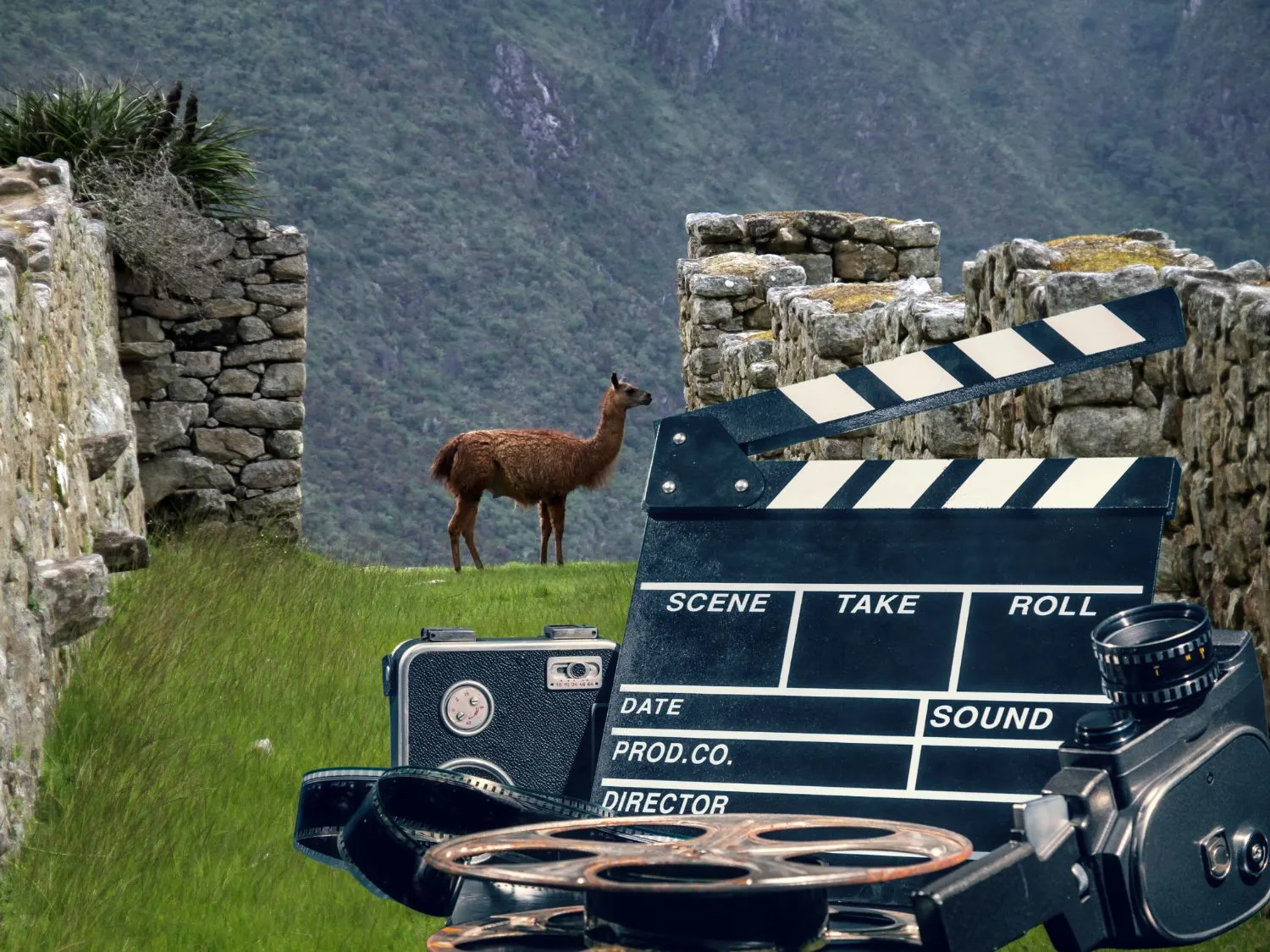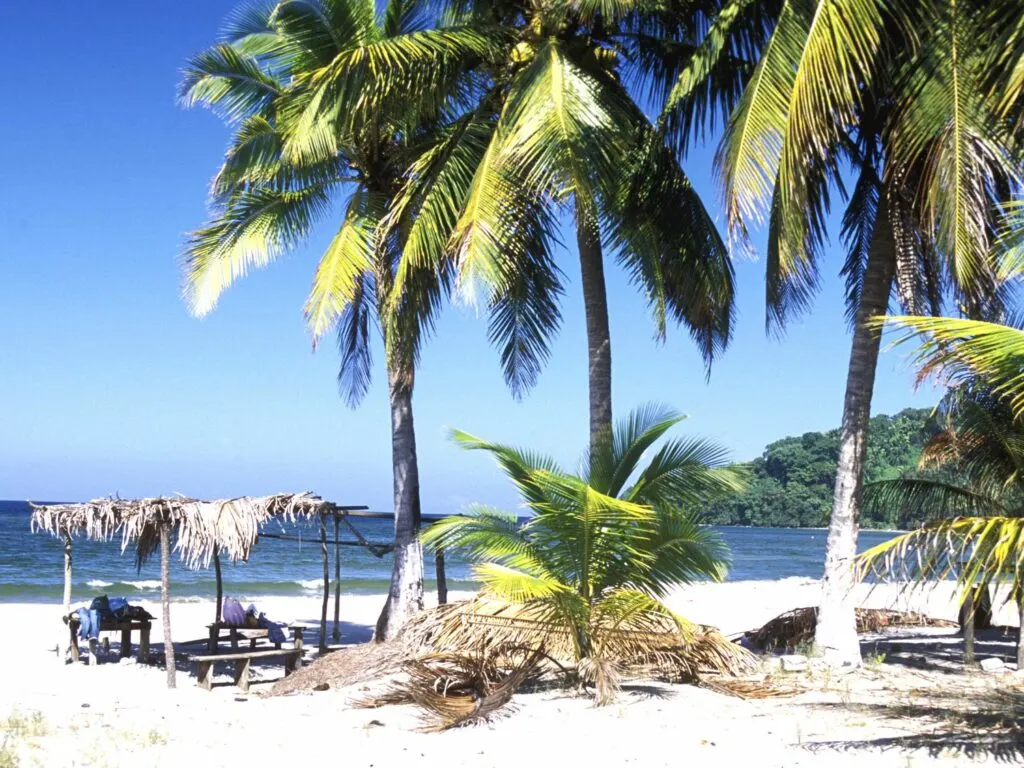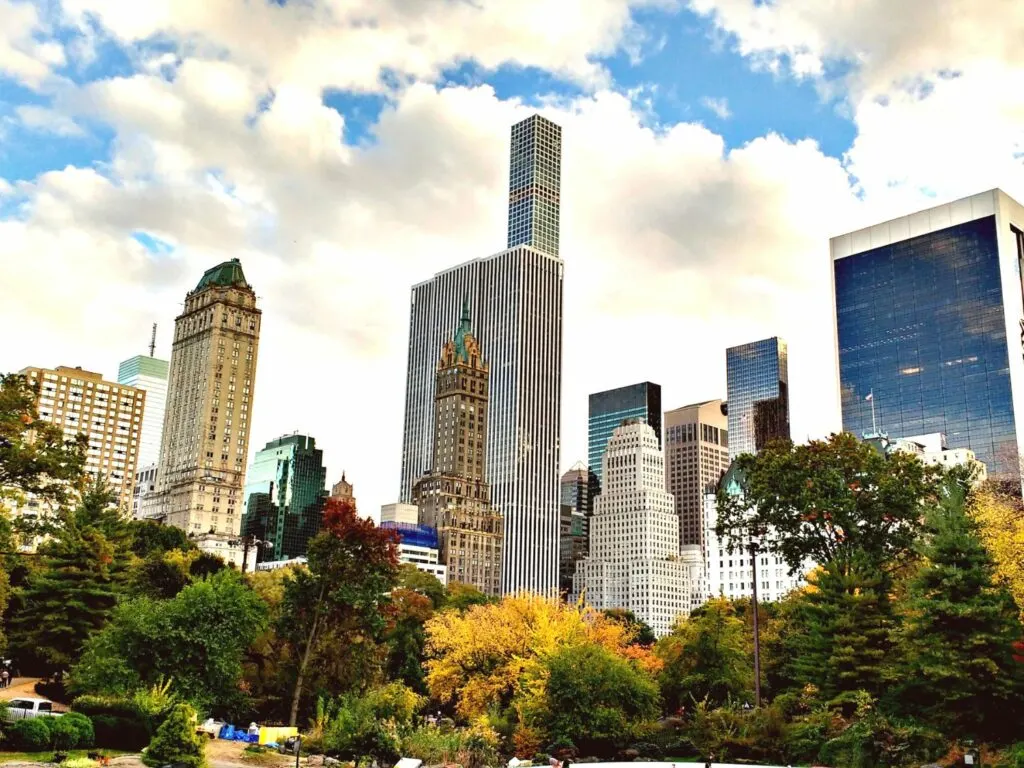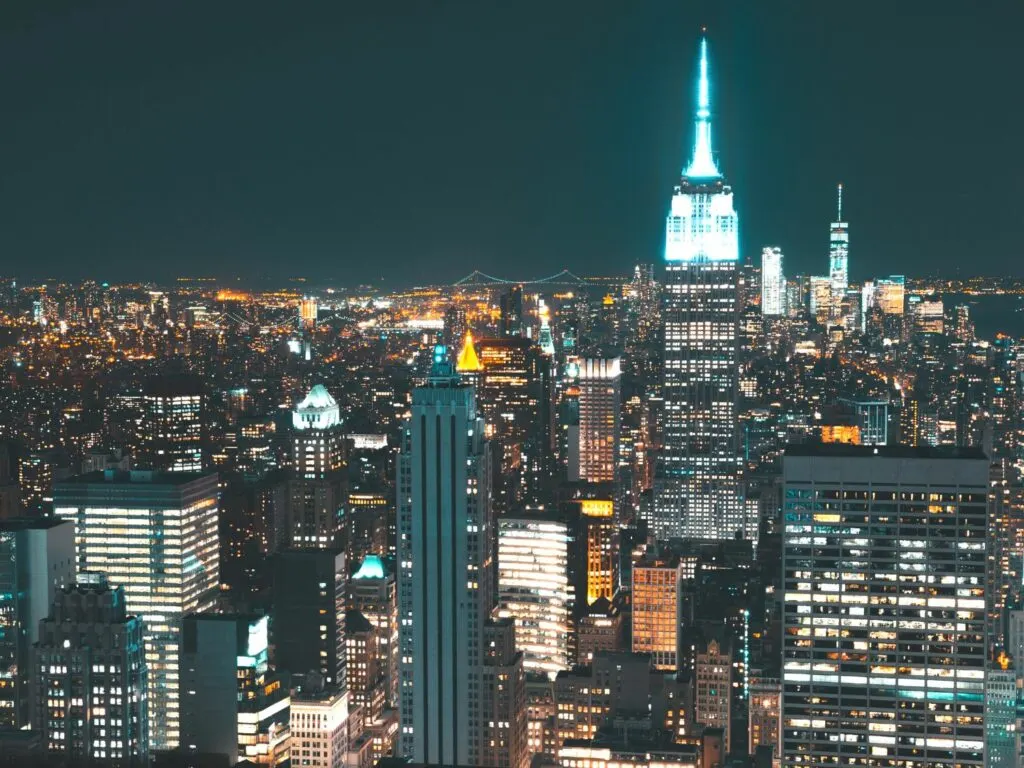Sofia De Vera combines a heartfelt passion for cinema with over 15 years of critiquing for esteemed film publications, wielding academic credentials from the University of Southern California and New York University, to serve as your personal guide through the enchanting worlds of film and television. Her full guest bio can be found here.
Latin America has a lot to offer for both national and international filmmakers. The continent has both modern cityscapes, along with spectacular history and ancient architecture. It is also well known for its stunning landscapes and diverse culture. So it will come as no surprise that there are so many wonderful movies set in Latin America.
Latin America is a vibrant and diverse continent that is home to a rich cultural heritage. From the ancient ruins of Machu Picchu in Peru to the lively streets of Mexico City, there is something for everyone in Latin America. With its rich history, stunning landscapes, and delicious cuisine, it is no wonder that many people are drawn to visit this region of the world.
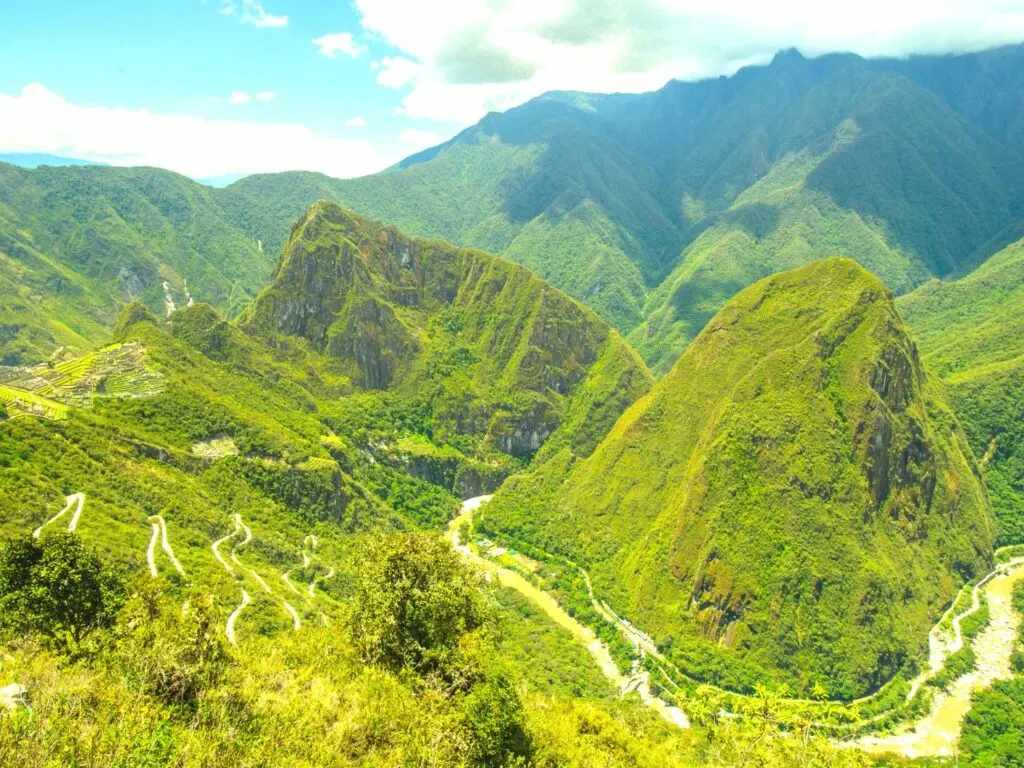
In general, Latino culture is known for its warmth and hospitality, and family is often an important aspect too. Music and dance are also an integral part of Latino culture, with a variety of styles and rhythms that are specific to different countries and regions. Food is also an important attribute of Latino culture, with a range of delicious dishes that vary from region to region.
When it comes to film, Latin America has produced some truly exceptional directors who have managed to capture the essence of their countries in their work. Paraguay’s Paz Encina is known for her unique blend of documentary and fiction, while Uruguay’s Lucía Garibaldi has gained international acclaim for her deeply personal films.
Puerto Rico’s José María Cabral has gained a reputation for his poignant and thought-provoking films, while the Dominican Republic’s Juanita Onzaga has gained praise for her nuanced and complex storytelling.
Bolivia’s Kiro Russo is known for his visually stunning films, while Ecuador’s Juan Sebastián Jácome has gained a reputation for his powerful and thought-provoking films. Venezuela’s Lorenzo Vigas has gained international acclaim for his thought-provoking films, which explore the complexities of life in his country.
These films are a great way to get closer to Latin America from the comfort of your own home. Whether you are looking to learn more about the culture, history, or people of the region, these films are a must-see.
These films often rely on the setting as much as the main characters, giving viewers an authentic and unique perspective of the location. This concept of cinematic travel can be applied to other destinations as well. For example, by watching movies that were shot in South Korea, the Philippines, Barcelona, Central America, or even the USA, you can gain insight into the culture, history, and landscapes of these places, and get ideas for your future travel plans.
Wondering where to watch? It depends on where you live in the world and which streaming services you have. We link to the streaming service we watch on in each case - be it Netflix, Amazon Prime, Apple TV+, or elsewhere.
You can get one month free of Amazon Prime (or a 6-month trial for students) of Amazon Prime and also get immediate access to FREE Two Day shipping, Amazon Video, and Music. While you won't be charged for your free trial, you'll be upgraded to a paid membership plan automatically at the end of the trial period - though if you have already binged all these, you could just cancel before the trial ends.
Apple TV+ also has a one-week trial, and Hulu has a one-month trial (which can be bundled with Disney!). Another option might be using a VPN to access Netflix titles locked to other regions. Netflix is now available in more than 190 countries worldwide and each country has a different library and availability. US Netflix is (understandably) one of the best.
While we wish everything could just be in one place - for now, it seems these are the best streaming platforms to watch on.
Page Contents
- Butch Cassidy and the Sundance Kid (1969)
- Seawards Journey [El viaje hacia el mar] (2003)
- The Liberator [Libertador] (2013)
- Perico Ripiao (2003)
- Quantum of Solace (2008)
- 7 Boxes (2012)
- Whisky (2004)
- The Rum Diary (2011)
- La soga (2010)
- The Heiresses [Las herederas] (2018)
- The Motorcycle Diaries [Diarios de motocicleta] (2004)
- The Forgotten Village (1941)
Butch Cassidy and the Sundance Kid (1969)
Butch Cassidy and the Sundance Kid is a classic western film directed by George Roy Hill and starring Paul Newman and Robert Redford as the titular characters. The film tells the story of Butch Cassidy and the Sundance Kid, two outlaws who are on the run from the law after a series of bank and train robberies.
As they flee to Bolivia to escape the law, Butch and Sundance encounter a series of challenges and confrontations, including a memorable shootout with a group of Bolivian bandits. Along the way, they are aided by a variety of colorful characters, including Etta Place, played by Katharine Ross, and the sly and cunning Harvey Logan, played by Ted Cassidy.
One of the standout features of Butch Cassidy and the Sundance Kid is its strong performances, particularly from Newman and Redford, who deliver iconic and memorable portrayals of the titular characters. The film also boasts memorable set pieces and action sequences, including a thrilling horse chase through the mountains and a dramatic shootout in the streets of a Bolivian town.
Butch Cassidy and the Sundance Kid was a critical and commercial success upon its release. It went on to be nominated for several awards, including an Academy Award for Best Original Screenplay. This classic western film offers thrilling action, memorable performances, and a timeless tale of friendship and adventure.
Seawards Journey [El viaje hacia el mar] (2003)
Seawards Journey is a film directed by Chilean filmmaker Raúl Ruiz. The film tells the story of a young sailor named Esteban who embarks on a journey to find his estranged father, a famous poet who has been missing for many years. Along the way, Esteban encounters a cast of colorful characters and travels through stunning landscapes, including the rugged coastlines and rolling hills of Chile.
Perhaps what’s best about the film is its stunning cinematography, which captures the beauty of Chile’s landscapes and landmarks. The film features sweeping shots of the country’s iconic beaches and mountains, as well as glimpses of its cultural and historical sites, such as the city of Valparaíso and the home of the poet Pablo Neruda.
The film’s strong performances are led by actor Gonzalo Valenzuela, who brings depth and emotion to the role of Esteban. The film also features memorable supporting turns from actors such as Blanca Lewin and Alejandro Goic.
The film was well-received by critics upon its release, earning several awards at film festivals around the world. It won the Grand Prize at the Valdivia International Film Festival and was nominated for Best Film at the San Sebastián International Film Festival.
Seawards Journey is a beautifully shot and emotionally powerful film that offers a unique look at the landscapes and culture of Chile. It is a must-see for fans of international cinema and those interested in Latin American culture.
The Liberator [Libertador] (2013)
The Liberator is a 2013 biographical war film directed by Alberto Arvelo and starring Édgar Ramírez as Simón Bolívar, the military and political leader who played a key role in the independence of several countries in South America, including Venezuela.
The film tells the story of Bolívar’s life, from his early years as a wealthy aristocrat to his eventual rise as a revolutionary leader and his efforts to unite the various countries of South America under a single federal republic.
The film is set in Venezuela and features several important local landmarks, including the city of Caracas and the Andes Mountains. It also includes scenes set in other countries in South America, such as Colombia, Peru, and Ecuador.
The Liberator was nominated for several awards, including the Goya Award for Best Spanish Language Foreign Film, the Ariel Award for Best Picture, and the Platinum Award for Best Film at the Worldfest Houston International Film Festival. The film received positive reviews for its historical accuracy and for Édgar Ramírez’s performance as Bolívar.
The Liberator is a beautifully shot film that offers a compelling look at the life of one of South America’s most important historical figures. It is a must-see for fans of historical drama and for anyone interested in the history of Venezuela and the surrounding region.
Perico Ripiao (2003)
Perico Ripiao is a Dominican Republic film directed by Johnny Hendrix Hinestroza. The film tells the story of a young man named Perico who returns to his hometown in the Dominican Republic after spending several years abroad. As he reconnects with his friends and family, Perico finds himself drawn into the world of “ripiao,” a popular style of music in the Dominican Republic.
The origins of “ripiao” can be traced back to the early 20th century, when musicians in the Dominican Republic began incorporating elements of various musical genres into their music. Over time, this fusion of styles evolved into the distinct style known as “ripiao.” In the 1980s and 1990s, “ripiao” experienced a resurgence in popularity, with a new generation of musicians incorporating more modern elements into the genre.
Perico Ripiao offers a vibrant depiction of Dominican culture and music. The film features cheerful performances of traditional Dominican songs and dance, as well as glimpses of the country’s colorful and lively cities. The film’s strong performances are led by actor Jean Jean, who brings charisma and energy to the role of Perico.
Perico Ripiao is a fun and entertaining film that offers a unique look at the culture and music of the Dominican Republic. It even went on to win the Grand Prize at the Santo Domingo International Film Festival and was nominated for Best Film at the Havana Film Festival. It is a great flick to see if you’re interested in Latin American music.
Quantum of Solace (2008)
Quantum of Solace is a James Bond film directed by Marc Forster and starring Daniel Craig as Bond. The film is the 22nd installment in the 007 franchise and the follow-up to the 2006 film Casino Royale.
In this film, Bond sets out to uncover the truth behind the death of Vesper Lynd, his former love interest. His investigation leads him to a shadowy organization known as Quantum, which is plotting to control the world’s water supply. As Bond travels from London to Italy, Austria, and finally to Bolivia, he confronts a series of formidable foes, including the film’s main villain, Dominic Greene, played by Mathieu Amalric.
One of the standout features of Quantum of Solace is its action-packed and suspenseful plot, which keeps audiences on the edge of their seats from start to finish. The film also boasts stunning cinematography and several memorable set pieces, including a high-speed car chase through the winding streets of Siena and a thrilling fight scene set in a hotel in the Bolivian desert.
While it depends on which person you ask, Quantum of Solace was considered one of the best new additions to the franchise. Is a thrilling and stylish film that offers non-stop action and suspense.
7 Boxes (2012)
7 Boxes is a Paraguayan thriller film directed by Juan Carlos Maneglia and Tana Schémbori. The film tells the story of Victor, a young street vendor in Asunción, the capital city of Paraguay, who is hired to transport seven mysterious boxes through the city’s crowded and chaotic market.
As Victor navigates the crowded streets and alleys of the market, he finds himself pursued by a variety of characters, including a rival street vendor, a corrupt police officer, and a gang of thieves. Along the way, he encounters a host of memorable characters, including a gruff old man, a beautiful young woman, and a quirky street performer.
This film is surprising due to its fast-paced and thrilling plot, which keeps audiences on the edge of their seats from start to finish. The film also boasts impressive cinematography and a strong sense of place, offering a unique look at the vibrant and chaotic streets of Asunción.
7 Boxes was a critical and commercial success upon its release, earning praise for its engaging plot and strong performances. In fact, it went on to become one of the most popular films in Paraguay, being seen by more people there than Titanic. It was nominated for several awards, including a Goya Award for Best Spanish Language Foreign Film.
Whisky (2004)
Whisky is an Uruguayan film directed by Juan Pablo Rebella and Pablo Stoll. The film tells the story of a small family-run business in Montevideo, the capital city of Uruguay, that is struggling to stay afloat. The film follows the lives of the family members as they navigate the challenges of running a business and deal with the complexities of their personal relationships.
One of the standout features of Whisky is its realistic and relatable portrayal of the struggles and triumphs of everyday life. The film offers a unique look at Uruguayan society and culture, including glimpses of the city of Montevideo and its historic landmarks, such as the Mercado del Puerto, a popular tourist destination.
The film’s strong performances are led by actors Andrés Pazos and Ana Katz, who bring depth and emotion to their roles. Whisky was well-received by critics upon its release and won several awards at film festivals around the world, including the Grand Prize at the Toulouse Latin America Film Festival.
Whisky is a poignant and thought-provoking film that offers a unique look at Uruguayan society and culture. It is a must-see for fans of international cinema and those interested in Latin American culture.
The Rum Diary (2011)
The Rum Diary is a film based on the novel of the same name by Hunter S. Thompson. The film is directed by Bruce Robinson and stars Johnny Depp as the main character, Paul Kemp, a struggling journalist who travels to Puerto Rico to work at a local newspaper.
As Kemp navigates the colorful and chaotic world of Puerto Rico, he encounters a series of challenges and confrontations, including a rivalry with a local journalist and a love affair with a beautiful and mysterious woman. Along the way, he is aided by a cast of memorable characters, including his eccentric and hard-drinking editor, Lotterman, played by Richard Jenkins, and his wild and unpredictable friend, Sala, played by Michael Rispoli.
While not a very well-received film, The Rum Diary was praised for its strong performances, particularly from Depp, who delivers a memorable and nuanced portrayal of the troubled and complex character of Kemp. The film also boasts impressive cinematography and a strong sense of place, offering a unique look at the vibrant and colorful world of Puerto Rico.
The Rum Diary is a compelling and entertaining film that offers a unique look at the vibrant and colorful world of Puerto Rico. If you’re a fan of Hunter S. Thompson’s writing, you should totally give this film a chance.
La soga (2010)
La soga is a thriller film directed by Carlos Moreno and starring Diego Cadavid and Ana Maria Orozco. The film is set in Colombia and tells the story of Juan, a young man who is falsely accused of a crime and sentenced to death. As Juan struggles to survive in the brutal and corrupt prison system, he encounters a series of challenges and confrontations, including battles with rival inmates and encounters with corrupt officials.
One of the standout features of La soga is its fast-paced and thrilling plot, which keeps audiences on the edge of their seats from start to finish. The film also boasts strong performances from its cast, particularly from Cadavid and Orozco, who deliver convincing and emotional portrayals of their characters.
La soga is a compelling and intense film that offers a unique look at the corrupt and brutal prison system of Colombia. It was a critical and commercial success upon its release, earning praise for its engaging plot and strong performances. It was nominated for several awards, including a Colombian Academy Award for Best Film. La soga is definitely a must-see for fans of dramatic films.
The Heiresses [Las herederas] (2018)
The Heiresses is a Paraguayan film directed by Marcelo Martinessi. The film tells the story of Chela and Chiquita, two elderly women who are starting to run out of their inherited wealth while living in Asunción, the capital city of Paraguay.
When Chiquita is imprisoned for fraud, Chela is forced to face the prospect of life on her own and begins to discover a new sense of independence and purpose.
The Heiresses has some incredible performances, particularly from lead actress Ana Brun, who delivers a nuanced and moving portrayal of Chela. The film also offers a unique look at Paraguayan society and culture, including glimpses of the city of Asunción and its historic landmarks, such as the Palacio de López, the presidential palace of Paraguay.
It went on to win the Silver Bear for Best Actress at the Berlin International Film Festival and was nominated for the Golden Globe for Best Foreign Language Film.
The Heiresses is a moving and thought-provoking film that offers a unique look at Paraguayan society and culture. Anyone interested in the depiction of the LGBT community in Latin America should give this film a chance.
The Motorcycle Diaries [Diarios de motocicleta] (2004)
The Motorcycle Diaries is a biographical drama film directed by Walter Salles and based on the memoir of the same name by Ernesto “Che” Guevara. The film stars Gael García Bernal as Guevara and follows his motorcycle journey through South America in 1952. The film is set in several countries, including Ecuador, and features some important local landmarks.
The plot of the film follows Guevara and his friend Alberto Granado as they travel through South America on a motorcycle, encountering a variety of people and cultures along the way. The journey starts in Buenos Aires, Argentina, and takes them through Chile, Peru, Colombia, and finally Venezuela. In Ecuador, Guevara and Granado visit the city of Guayaquil and the Galápagos Islands, which are shown in the film.
The film was well-received by critics and won several awards, including the Audience Award at the Sundance Film Festival and the BAFTA Award for Best Screenplay. It was also nominated for the Academy Award for Best Original Screenplay.
García Bernal delivers a powerful performance as Guevara, capturing the transformation that he undergoes during his journey from a carefree medical student to a committed revolutionary. The film also features strong performances from Rodrigo de la Serna as Granado and Mercedes Morán as Guevara’s mother.
The Motorcycle Diaries is a moving and inspiring film that follows the journey of two young men as they discover their place in the world and the power of their own convictions. If you’re interested in history, travel, or simply a good coming-of-age story, this film is definitely worth checking out.
The Forgotten Village (1941)
The Forgotten Village is a documentary film directed by Ralph L. Beals and produced by the Museum of Modern Art. The film is set in a small village in Ecuador and follows the story of the community as it undergoes a transformation from a traditional, isolated society to a modern, industrialized one.
The Forgotten Village offers striking imagery and an intimate portrayal of the lives of the villagers. The film offers a unique and insightful look at the effects of modernization on indigenous cultures and raises important questions about the role of progress and the preservation of tradition.
The film was a critical and commercial success upon its release and was nominated for an Academy Award for Best Documentary Feature. It was also praised for its innovative use of sound and cinematography, and its ability to capture the beauty and complexity of its subject.
The Forgotten Village is a thought-provoking and beautifully filmed documentary that offers a unique and intimate look at the lives of a small community in Ecuador.

